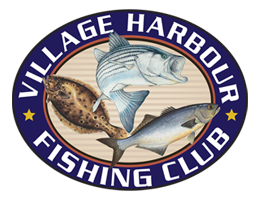If anyone has any facts that the board may wish to consider to be posted please pass them on to VHFCReports@Verizon.net.
Delaware’s state-record Weakfish was caught in Delaware Bay in 1985 and weighed 19 pounds 2 ounces. Incidentally, Delaware Bay is also home to four other state-record fish—all caught over twenty years ago. The largest and most impressive, a swordfish, was caught in the bay in 1978 and weighed 276 pounds 12 ounces.
The Delaware state fish is the Weakfish (adopted in 1981). Delaware also has a state macro-invertebrate, the stonefly, which, due to the egg-laying female stonefly’s extraordinary ability to attract fish, especially trout and steelhead, is enough to make the state’s fly fishermen proud.
Weakfish, those strong fighters with the ironic name, are in steep decline. Recent years have seen recreational catches decline an astounding 98%, while commercial catches have plunged 82%. Over fishing and foraging Striped Bass appear to be the culprits. The state of Delaware now has a weakfish-tagging program in an effort to save the once thriving game fish.
Florida’s state saltwater fish is the Atlantic sailfish, which was adopted in 1975.
Florida’s saltwater state-record Atlantic sailfish was caught in 1996 and weighed 116 pounds 1O ounces. The wor1d – record Atlantic sailfish was caught in Luanda, Angola, in 1994 and weighed 141 pounds 1 ounce.
Since 1987, nearly half of all dead adult loons in New England had lead poisoning. The culprit? Fishing weights and leadhead lures. Loons frequently confuse leadhead jigs and lures as prey. Also, many loons ingest bait from lost or discarded fishing gear, often with lead weights still attached. States including New Hampshire, Maine, and New York have now banned the smaller lead sinkers. With today’s technology, weights and jigs made of tungsten, tin, steel, bismuth, and other alloys are becoming more readily available.
Fishermen Catch the Darndest Things
The Bluefish were feeding as two Florida anglers went trolling on the St. Marks River in August of 2006. One of the anglers was fighting a hefty fish when it shook loose. Just then another reel whined with a strike. The angler dropped his first fishing rod—its lure still in the water—and grabbed the new rod. As he set the hook, his first rod hooked-up and skyrocketed from the deck and into the water. Disappointed by the loss of the expensive fishing gear, the pair continued trolling when, thirty minutes later; they hooked a pair of Spanish Mackerels. One line suddenly grew heavy as the earlier lost rod came out from the water. Apparently the Mackerel had looped the tip of the overboard rod and was knocked loose, leaving the hook snagged into the rod’s top eyelet. The Bluefish that had yanked the rod overboard was soon landed.
Spotted sea trout are also known as spotted Squeteague. A favorite saltwater sport fish and a member of the drum family, this pelagic species lacks the sensory barbell located on the chin for bottom feeding. Squeteagues are voracious feeders that favor menhaden, mummichogs, anchovies, mullet, and pinfish. Unfortunately, this coastal fish has been sharply impacted by commercial shrimp trawlers, leading to fishing restrictions in many parts of the country.
The Maryland state record Striped Bass was caught in Chesapeake Bay in 1995 and weighed 67 pounds 8 ounces. This catch is particularly impressive because of the fish’s status ten years earlier. From 1985 to 1989, a moratorium was placed on Striped Bass fishing in Maryland because stocks of the game fish had plummeted. The fish has since made a remarkable comeback culminating in the 1995 state record. The world record Striped Bass was caught off Atlantic City, New Jersey, in 1982 and weighed 78 pounds 8 ounces.
Remarkable Catches:
Many striped-bass fishermen spend a lifetime trying to land a striper over 50 pounds. Few anglers, however, have had as many memorable catches as Joe Brotz. He’s caught eight striped bass over 50 pounds with three more just under the fifty-pound mark. His largest striper was a 61·pounder caught in the Merrimack River, Massachusetts, in 1981. Now that’s a lifetime of fishing memories. See Brotz standing beside his huge striped bass at www.incrediblefishingstoriescom.
The triangle fly is probably the most unusual of saltwater flies. It’s one of the few, if not only, flies tied to a treble hook. It’s also barely a fly at all, because hardly any material is used. It is complete after tying the two straw pearl twinkle flashes and the tiny tuft of natural squirrel, leaving an entire hook fully exposed. Incredibly this barebacked treble fly is a knockout when it comes to sea trout.
Truly fresh fish are almost odorless. The fishiness of a catch is caused by oxidized fats and acids released by bacteria and enzymes. Most anglers know to ice a catch immediately. Some even bleed their fish before icing.
But here’s a tip you may not know — cooking does not destroy contaminants. However, since they are found mostly in fat, trimming the belly meat and skinning the fillets will help greatly. You should also cut away all the dark fatty tissue along the lateral line. Broiling or grilling the fillets will cause any leftover fat to drip away. And, please, do not use the drippings for sauces.
Albert McReynolds had been fighting rain, waves, and a world-record striped bass for hours when he slipped down a mossy rock jetty near Atlantic City, New Jersey, on September 21, 1982. He had been using twenty-pound test fishing line on a spinning reel, with a finger mullet lure, when he hooked the enormous fish. At midnight, after countless runs and multiple near spooling, McReynolds had the fish close. As he leaned down with the gaff, he slipped neck-deep into the sea. Refusing to give up, he jammed his hand through the fish’s gill—making world history with the 78·pound 8-ounce, once in-a-lifetime catch. See Reynolds and his famous fish at www.incrediblefishingstories.com.
Of the fifty United States, thirty-eight have a striped-bass record. New Jersey has the largest striped-bass record—a 78-pound 8·ounce whopper that was caught in 1982. The state with the smallest striped-bass record is Iowa. That landlocked striper weighed only 9 pounds 4 ounces and was caught in 1983.
There’s something fishy about beer these days. Fish Tail Ale is popular as ever, and New Jersey’s Flying Fish Brewery is one of the state’s largest specialty breweries. There’s also Washington’s Wild Salmon Organic Pale Ale, Florida’s Land Shark beer, Delaware’s Dogfish Head beer, and two versions of Stingray beer—a lighter version from the Cayman Islands and a dark beer from Canada.
Did you know that there are approximately 275 species of drum in the world, including the many species of croakers, weakfish, and whitings? Drums are known for their extremely long dorsal fins that nearly reach their tails and the drumming sound they create by rubbing their stomach muscles against their swim bladders. Found in both freshwater and salt water, this game fish has at least nine separate world-record listings with the International Game Fish Association.
Here’s a twist on the old bait and switch. Fishing for bluefish in Long Island Sound, an angler pinned a live porgv on his hook for bait. Soon he had a strike, but the line felt dead when he went to set the hook. He reeled in, and, to his astonishment, the live porgy on the hook was now a partially digested porgy. A bluefish had inhaled it, but, when the angler reared back on the line, the hook pulled free of the live porgy and instead snagged an earlier meal on its wav back out.




